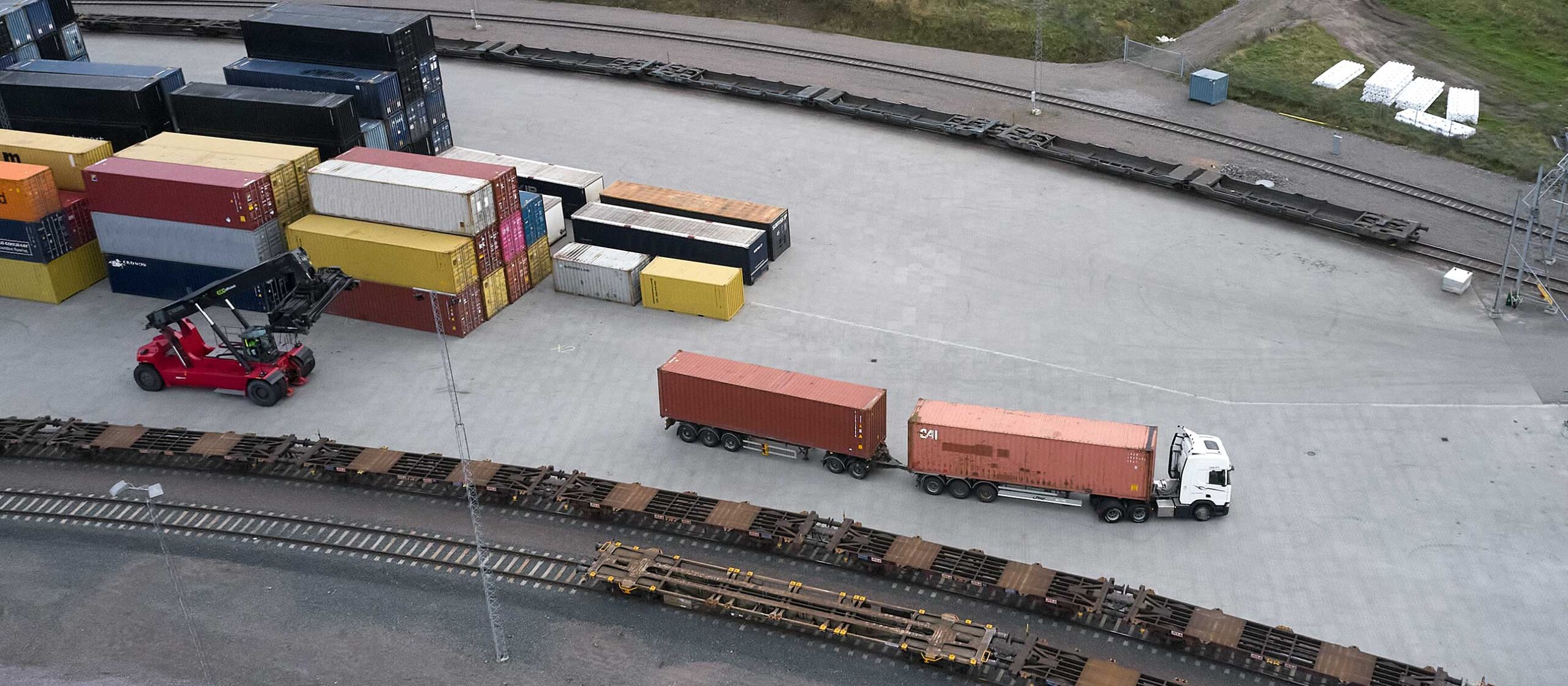The Swedish company Jula Logistics uses a 32 meters Scania truck as High Capacity Transport to be able to bring more cargo for each transport and consequently lower emissions. Now it’s time for the next step: the huge truck will be powered by electricity. This is the latest example of a sustainable transport solution that Scania develops in close collaboration with a progressive customer.

European trucks are allowed to carry 40 tonnes and bring a 12 metres container. Since 2015, Jula Logistics uses a vehicle twice that size, which means it carries two containers and is 32 metres long. This truck has a total weight of 64 tonnes, including load and trailer. By carrying a bigger cargo in each transport, and thereby decreasing the number of times it has to drive between the warehouse and loading port each day, Jula Logistics saves 70 percent on energy and emissions per transported unit. Now, the truck will be powered by electricity, and will be put into operation sometimes the first half of 2022.
”We use intermodal transport, where our cargo arrives to the port in Gothenburg by boat, are stowed onto a train that goes to Falköping. From there, the cargo is carried by truck the last bit of the journey to our warehouse in Skara. To make this chain of transport even more sustainable by using a truck powered by electricity from the solar panels that we will build on the roof of our warehouse is just fantastiv,”
says Lennart Karlsson, CEO Jula Logistics.

The collaboration with Jula Logistics is in line with how Scania drives the shift to sustainable transport.
”Electrification is a must for our commitment towards zero emissions and to reach our climate targets. Close partnerships with stakeholders that share our values is important for this to proceed at necessary pace. We can’t do this on our own, and Jula Logistics is a much-appreciated partner that cares deeply for the environment,”
says Fredrik Allard, Head of E-mobility at Scania.
Scania works with both prototypes and new business models, and together with customers and other partners, future solutions are simulated and realised. The solution that Scania has assisted Jula Logistics with enables the extra long and heavy vehicle to take the round-trip from where the train stops in Falköping to the warehouse in Skara a couple of times, a distance that measures 60 kilometres.
”The new, extremely long and heavy electrified truck is a great example of how a close dialogue with customers makes it possible for us to build a one-of-a-kind vehicle that meets that particular customer’s demands at a very early stage, also for a model that is not in series production,”
says Allard.
A detailed overview of energy consumption, an optimised route schedule and the need to charge is meticulously simulated beforehand to enable this transport flow. Once the truck is in operation, it has a positive influence from day one when it comes to the adjustment of Jula’s distribution flow. A vital part in the collaboration with Jula Logistics will be to optimise the charging process, related infrastructure and the complete flow in due time.
”Our partnership with Scania shows that this is technically possible, but we also need to create a long-term possibility to drive these longer vehicles that enable us to have a larger amount of cargo on the last part of our intermodal flow,”
says Karlsson.
Scania and Jula Group are aiming for a long-term partnership with extensive electrification of the transport flows that Jula Logistics runs. The electrification of this 32 metres Scania truck is just the beginning.


 Copyright 2017-2023 All rights reserved.
Copyright 2017-2023 All rights reserved.